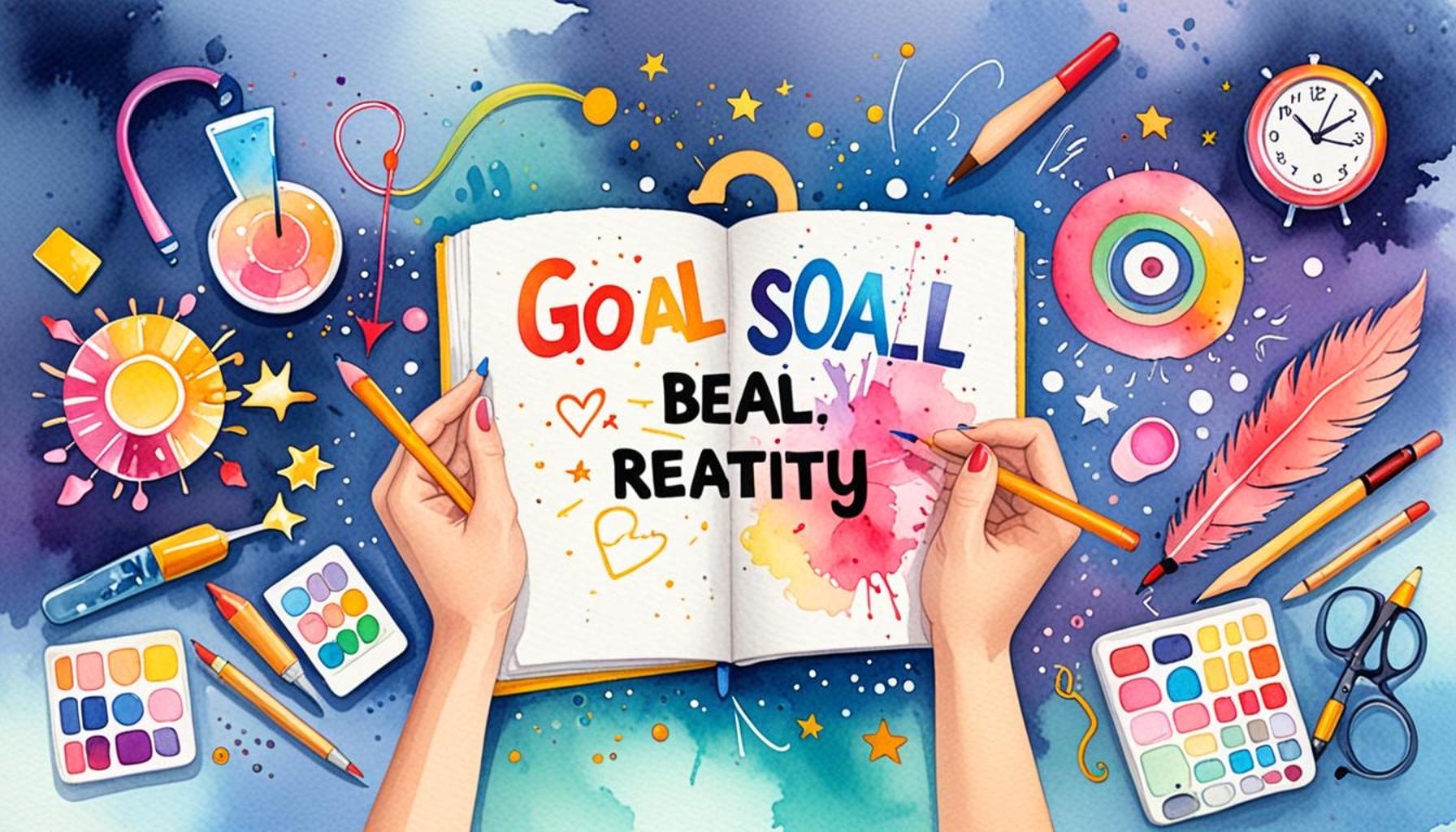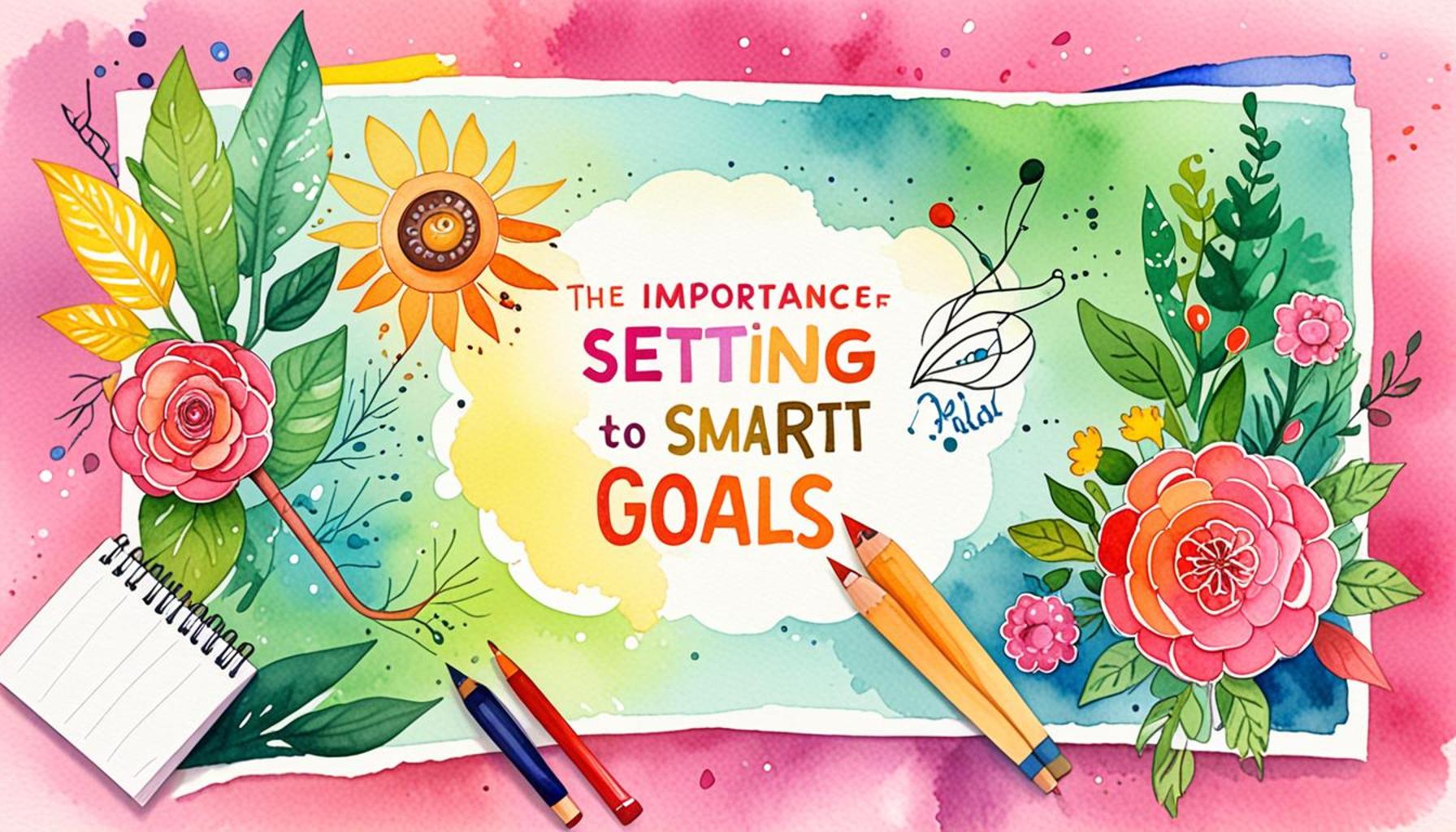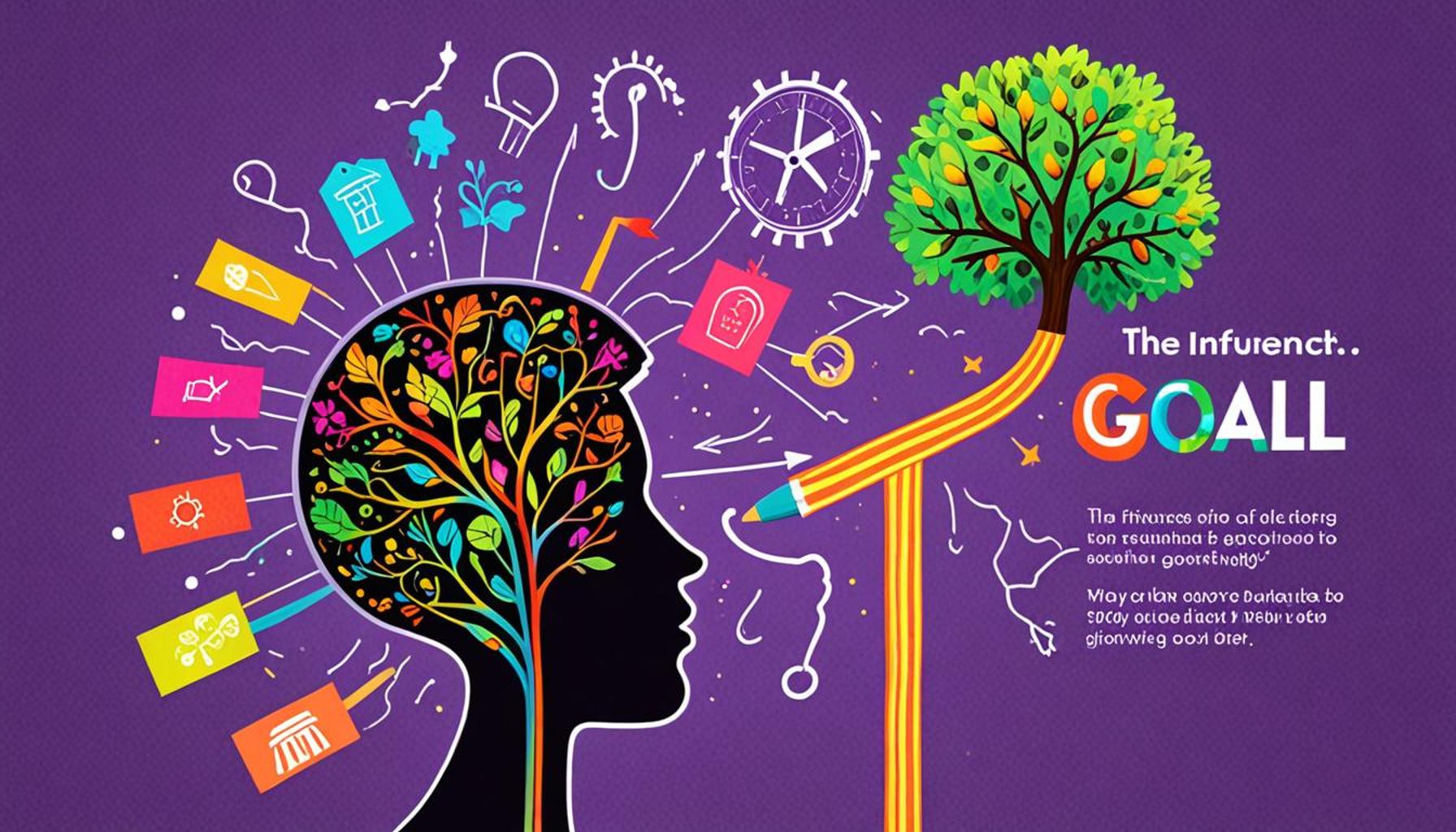How goal setting can boost creativity and innovation in personal projects

Harnessing Purpose Through Structured Goal Setting
In today’s fast-paced world, where ideas often clash in a whirlwind of creativity, having a clear vision is essential. Setting clear goals serves as a compass, guiding you through the creative fog while simultaneously pushing the boundaries of innovation. This is especially pertinent in a vibrant, multi-faceted country like Nigeria, where the melding of various cultural influences sparks unique creative expressions. Whether you’re a sculptor in Kano, a filmmaker in Enugu, or a writer in Ibadan, effective goal setting can significantly enhance your creative journey.
Here’s how implementing structured goals can reshape your artistic endeavors:
- Focus: By establishing clear, targeted objectives, you can eliminate unnecessary distractions that often dilute creativity. For instance, a musician might concentrate solely on producing an EP rather than getting sidetracked by social media trends. This focused approach allows for deeper explorations and richer expressions in their work.
- Accountability: When you write down your goals, you’re not just making a wish; you’re making a promise to yourself. Setting deadlines encourages you to take tangible steps toward achieving your goals. For example, an aspiring novelist in Nigeria might commit to writing a certain number of words daily, creating a routine that bolsters their dedication and progress.
- Motivation: Celebrating small victories, like completing a chapter or finishing a canvas, instills a sense of achievement that fuels further creativity. Envision an architect in Lagos who finishes the preliminary designs for a sustainable housing project. Each small victory in their design process serves as a motivator to push through the complexities of architectural innovation.
The dynamic landscape of Nigeria offers endless opportunities for creative pursuits. Take the example of a fashion designer aiming to incorporate indigenous fabrics and designs into mainstream fashion. Setting goals to create a specific number of outfits for a local exhibition not only serves personal aspirations but also highlights Nigeria’s rich textile heritage, fostering a renewed cultural appreciation.
As we delve deeper into the intricacies of goal setting, it’s vital to consider the SMART criteria—Specific, Measurable, Achievable, Relevant, and Time-bound. These parameters can help clarify ambitions and transform vague ideas into actionable plans. For example, a graphic designer might set a SMART goal to complete their portfolio overhaul by the end of the quarter, ensuring that each piece aligns with their evolving style and personal brand.
Exploring the intersection of structured goal setting and creativity opens new avenues for innovation and expression. By channeling your artistic energy through defined objectives, you can not only bring your ideas to fruition but also contribute meaningfully to the rich tapestry of Nigeria’s creative community, inspiring others along the way.
SEE ALSO: Click here to read another article
Unlocking Creativity Through Strategic Planning
Goal setting is not merely a task management tool; it is a powerful catalyst for creativity and innovation in personal projects. In a society rich with cultural diversity like Nigeria, where creativity thrives in countless forms—from music and storytelling to fashion and visual arts—setting strategic goals can significantly elevate artistic expression. By framing your creative pursuits around structured objectives, you can unleash the full potential of your ideas and projects.
One of the most influential aspects of goal setting is its ability to enhance clarity and direction. Without a well-defined path, creative individuals may find themselves drifting, unsure of which direction to take or how to capture their inspiration. For instance, a photographer in Lagos contemplating a series on urban life might set a goal to complete a photo essay within three months. This not only lends urgency to the artistic endeavor but also clarifies the vision, guiding the photographer to explore various neighborhoods and capture the essence of city living more focusedly.
The process of setting goals also encourages experimentation and risk-taking. When given a framework, artists are more likely to venture beyond their comfort zones and explore unconventional methods. Consider a theater group in Ibadan aiming to reimagine classic Nigerian plays; by establishing a goal to innovate five key scenes, they can creatively reinterpret cultural narratives while encouraging collaborative brainstorming sessions among cast and crew. Such an approach fuels innovation by promoting a culture of risk and exploration.
Moreover, defined goals facilitate self-reflection and growth. By routinely reviewing progress against objectives, creatives can identify areas of strength and opportunities for improvement. Imagine a budding filmmaker who sets out to create a short film within a specific timeframe. As they document their progress, they can assess which techniques resonate with their audience, adjusting their workflow to maximize impact in future projects. This iterative learning process is invaluable for personal and professional development.
When you set specific and achievable goals, you pave the way for collaboration and networking with others who share similar aims. For instance, a visual artist looking to collaborate with local artisans on a community mural might set the benchmark of completing a draft design by a particular date. This deadline can serve as a focal point, encouraging other artists to contribute their skills, creating a synergy that elevates the project’s creativity and reach. Collaborative efforts help imbue projects with varied perspectives, thus enhancing the innovation aspect.
As we explore the profound connection between goal setting and creative prowess, it becomes evident that having structured objectives opens doors to a multitude of possibilities. By establishing a roadmap for your artistic endeavors, you harness not just your creativity but also the collective brilliance of the vibrant Nigerian cultural landscape, ultimately producing works that resonate far beyond individual aspirations.
| Category | Description |
|---|---|
| Enhanced Focus | Setting specific goals helps refine your focus on tasks, eliminating distractions that hinder creative thought. |
| Inspiring Innovation | Clear objectives encourage innovative thinking, as they provide a roadmap for exploring new and imaginative solutions. |
When personal projects are driven by well-defined goals, they not only streamline efforts but also carve pathways for innovation. Enhanced focus acts as a creative catalyst; by concentrating on a singular vision, individuals can immerse themselves in ideation without succumbing to tangential thoughts. This process contrasts starkly with the often overwhelming nature of open-ended creative pursuits.Moreover, inspiring innovation through goal setting fosters a proactive mindset ripe for exploration. Each milestone achieved can build momentum, spur new ideas, and encourage taking calculated risks. Entering project phases with a clear directive invigorates the creative process, leading to a dynamic interplay between structure and spontaneous thought. As you reflect on potential solutions, the synthesis of focused efforts and innovative concepts can lead to breakthroughs in your personal projects. This exciting synergy can transform ideas into tangible outcomes, ultimately enhancing the creativity behind them.
CHECK OUT: Click here to explore more
The Role of Accountability in Fostering Creativity
Another pivotal element of goal setting is accountability. When creatives establish specific objectives, the act of sharing these aims with peers or mentors can bolster their commitment to the project. For example, a graphic designer aiming to launch a new clothing line might form a small advisory group of fellow designers to evaluate their progress. Not only does this create a support system, but it also generates an environment where constructive feedback is encouraged. The collective wisdom of a group can inspire a designer to think differently about their designs, resulting in innovative clothing that marries traditional motifs with modern aesthetics.
Furthermore, the discipline that comes from pursuing set goals cultivates a mindset of perseverance. The path to creativity is often fraught with challenges and obstacles, from lack of inspiration to technical difficulties. By having goals in place, artists and innovators develop resilience that enables them to overcome setbacks more effectively. For instance, a poet working on a collection of works might face writer’s block; however, if they are committed to releasing their poetry book by a predetermined date, they may be more likely to push through the difficult times, experimenting with new writing styles or themes to meet their deadline.
In the Nigerian context, the impact of goal setting can also be observed in community-driven projects. Many creatives band together for initiatives that promote local culture and heritage. Establishing shared goals helps align the visions of diverse collaborators and keeps everyone focused on the end objective. These interactions can spark collaborative innovation that might not have emerged in isolation. For instance, a community radio initiative could set a goal to produce a monthly cultural segment. By collaborating with local artists, musicians, and storytellers, they can develop fresh approaches that celebrate regional narratives, offering something unique to the audience and stimulating local pride.
Transforming Ideas Into Tangible Outcomes
Moreover, when creatives engage in goal setting, they often transition from mere brainstorming to productive execution of ideas. Having a well-articulated plan allows individuals to break down larger projects into manageable tasks. For example, an aspiring filmmaker in Nigeria may have a vision for a documentary highlighting the lives of street vendors. By setting incremental goals—such as scripting, gathering footage, and editing phases—they can chart a clear course towards completing the film. This structured approach not only builds momentum but also allows for periodic assessment of creativity within each phase, ensuring that the final product is both innovative and polished.
Following the framework of SMART goals—Specific, Measurable, Achievable, Relevant, and Time-bound—can further enhance the effectiveness of creative projects. Setting a SMART goal such as “produce five artworks inspired by Nigerian folklore within six months” creates a clear directive. This precision fosters a creative environment where artists can experiment with different mediums while remaining tethered to their central theme, thus allowing for boundless imagination within a defined parameter.
Additionally, the act of celebrating small victories along the way can reinvigorate the creative process. Recognizing completed milestones can lead to increased motivation and inspire further innovation. A designer who achieves the goal of showcasing a prototype can use the feedback received to iterate on their designs or explore adjacent styles. Celebrating these achievements fosters a culture of creativity where the potential for innovative breakthroughs becomes part of the artistic journey.
YOU MAY ALSO LIKE: Read read another article
Conclusion: Harnessing the Power of Goals for Creative Success
In the realm of creativity and innovation, the art of goal setting emerges as a transformative tool that catalyzes personal projects. Whether through establishing accountability structures, fostering collaboration, or encouraging perseverance, setting clear objectives guides creatives toward tangible outcomes. By breaking down larger ambitions into manageable tasks, individuals can navigate the often stormy waters of the creative process with renewed focus and clarity.
The synergy created within teams and communities is particularly significant in Nigeria, where cultural narratives flourish through shared aspirations. Goals not only align diverse perspectives but also ignite collaborative innovation, leading to the birth of projects that resonate with local pride and authenticity. As showcased in various examples, such as community-driven initiatives and artistic endeavors, the distinct fusion of local elements within a structured framework encourages unparalleled creativity.
Furthermore, incorporating SMART goals into the creative process enhances efficiency and fosters an environment ripe for experimentation. By celebrating each milestone, creatives can cultivate motivation and sustain momentum, making the journey toward innovation as rewarding as the destination itself. Ultimately, the practice of setting and pursuing clear goals propels individuals beyond traditional boundaries, urging them to explore uncharted territories of artistic expression.
As you embark on your creative journey, whether you’re a musician, painter, filmmaker, or storyteller, remember that goal setting is more than a mere strategy—it is a powerful catalyst that unlocks the full potential of your imagination. Embrace it, and watch as your ideas flourish into vibrant realities.


